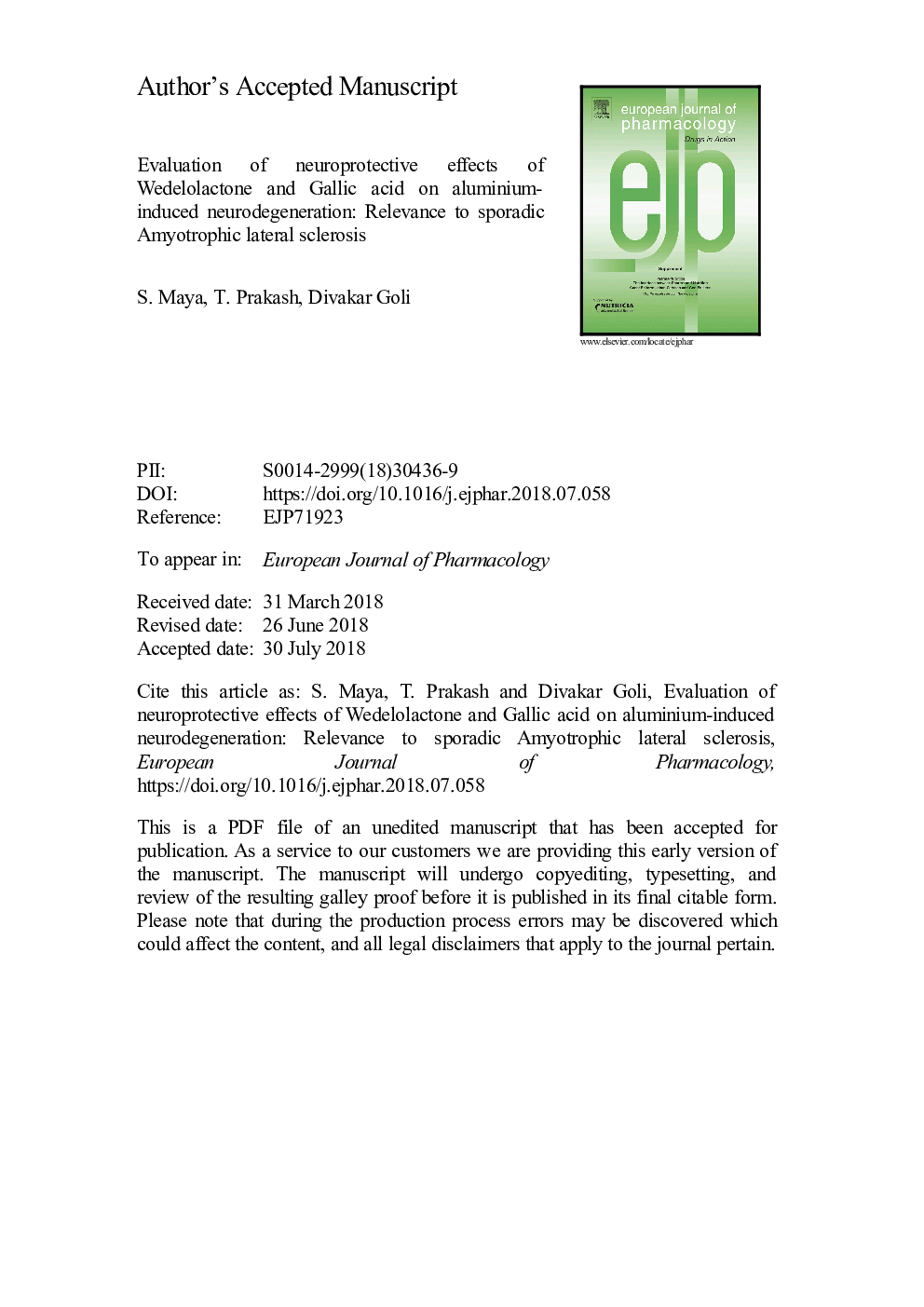| Article ID | Journal | Published Year | Pages | File Type |
|---|---|---|---|---|
| 8528872 | European Journal of Pharmacology | 2018 | 31 Pages |
Abstract
Al exposure causes an alteration in the several ions in the body and causes toxicity. Such as apoptosis, oxidative stress, disruption in neuronal transport, mitochondrial damage, excitotoxicity, generation of inflammatory mediators, and microglial activation. These multiple mechanisms lead to the several neurodegenerative diseases, including sporadic amyotrophic lateral sclerosis (sALS). The study aims to unravel the mechanisms behind the neuroprotective effects of wedelolactone (WL) and gallic acid (GA) against aluminium-induced neurodegeneration and thereby to unlock a platform to find a cure for sALS. We studied the neuroprotective effects of WL (100 & 200â¯mg/kg) and GA (100 & 200â¯mg/kg) using aluminium chloride (AlCl3)-induced neurodegeneration model. The study was conducted using male Wistar rats. We assessed the effects of WL and GA on motor learning ability, motor coordination, locomotor activity, cytokine production, BDNF, glutathione peroxidase (GPx), m-calpain, caspase-3 inhibition and L-glutamate level. The study suggests that the treatment with WL and GA could protect the motor neurons from the toxicity that caused by Al via improving the antioxidant status, BDNF, and by preventing glutamate excitotoxicity. Also, WL and GA are found to be effective in inhibiting caspase-3 activation and downregulating inflammatory cytokines. WL and GA also found effective in improving the motor learning abilities and motor coordination in rats. The protective effects of the WL and GA were further confirmed from histopathological results. WL and GA prevent the neurofibrillary tangle formation and neuronal damage. The study concluded that the WL and GA were dose-dependently effective in managing the AlCl3-induced neurodegeneration.
Related Topics
Life Sciences
Neuroscience
Cellular and Molecular Neuroscience
Authors
S. Maya, T. Prakash, Divakar Goli,
